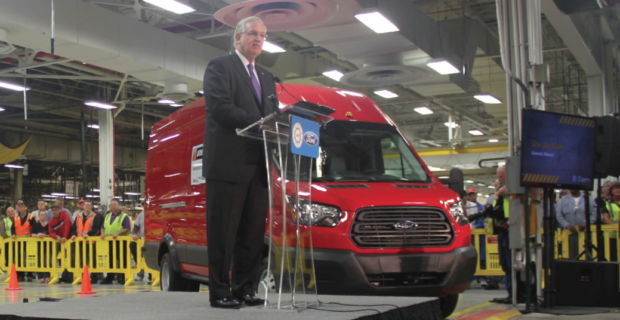HOME | ABOUT US | MEDIA KIT | CONTACT US | INQUIRE
HOME | ABOUT US | MEDIA KIT | CONTACT US | INQUIRE

As labor trends go, this one is well-documented: According to the Bureau of Labor Statistics, the nation’s union membership rate since 1983 has fallen by nearly half. The rate—the percent of wage and salary workers who were members of unions—was 11.06 percent in 2015, nearly matching the 2014 figure. But the overall rate was down because even though union membership nationwide rose by more than 200,000, the overall work force increased by 2.3 million.
Bucking that trend were Missouri and Kansas, which saw union membership rates in-crease significantly in 2015 on the strength of increased activity in vehicle manufacturing and construction. That still left the two states in the bottom half—Missouri at No. 31 and Kansas at 32—in the percentages of the work force com-prising union members last year. Missouri’s was 9.7 percent of employment; Kansas was at 9.
While the Bureau of Labor Statistics doesn’t accrue data as granular as the MSA level, the increased activity in the Kansas City area has been both evident and noteworthy. The car-building sector alone provided an additional $108.5 million boost in overall economic potential, thanks to contracts signed last fall by more than 11,000 workers at the Ford and General Motors assembly plants in the area.
At the Ford plant in Claycomo, roughly 7,500 workers picked up profit-sharing checks of $9,300 this spring, accounting for nearly $70 million in additional income. The GM workers at the Fairfax plant in Kansas City, Kan., likewise received a combined $38.5 million under the new agreement.
The regional benefits of higher union membership go beyond short-term economic bumps. “The increased hiring at Ford and GM, as well as at their supplier plants, has definitely helped the economy and had some impact on unemployment,” said Bob Jacobi, director of the Labor-Management Council of Greater Kansas City. “But you also tend, particularly in that industry, to get hires who are not necessarily local—they are transferring in, they are management folks who tend to come from other parts of the country, but it brings new people to the area.”
What’s happened at the auto plants, Jacobi said, reflects some of the interdependency among union disciplines. Ford pumped
more than $1 billion into refitting and expanding production at the Claycomo plant, a project that took more than a year and required hundreds of construction workers.
“While Ford, if you go back about four or five years, has almost doubled their membership through this latest round of hiring, another offshoot is that we saw a lot more construction employment during upgrades to the plant,” Jacobi said. “That has kept a lot of folks in the skilled trades busy for quite a while,” and those trades are heavily made up of union members.
Overall, the long-term decline in union membership has made unions, in some respects, victims of their own successes. Many of the conditions that prompted union formation in the first place have been upgraded, and are now standard aspects of employment practice, going back to adoption of the 40-hour work week, eight-hour day, overtime and other benefits.
“With a lot of things people have in terms of legal protections, they might think, ‘Well, it’s just not as urgent any more,’ ” Jacobi said. “But unions in general have not been as aggressive or creative in their organizing as they could have been. That’s pretty true across the board, but I think that’s starting to change a bit.”
Highly publicized efforts to increase wages for lower-paid workers, for example, may not succeed in the short term or may not immediately lead to increased union membership. But they have the effect of changing public attitudes about the value of labor.
No better example of that exists than Walmart. Early this year, the world’s biggest retailer announced that it would commit $2.7 billion to higher wagers over a two-year period, after the company had been routinely singled out for criticism by advocates for higher wages.
Moreover, organized labor is shifting its focus to areas where employment growth is projected to be fastest, particularly in health-care settings, with efforts to unionize nursing cohorts and support staff at hospitals, for example.
Developments like those could lay the groundwork for longer-term changes in compensation, benefits and working conditions. The minimum-wage debate “has exposed a lot of people to organized labor who didn’t have much exposure before,” Jacobi said. “We could be looking at different models of membership and how they represent and support people.”